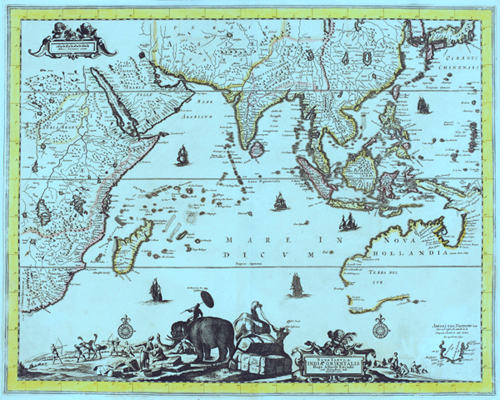Overview:
A castrato is a male singer with a soprano, mezzo-soprano,
or alto voice. From about 1550 CE to the late 19th century,
most were created by castrating boys before they reaching
puberty. This prevented their vocal cords from lengthening
and their voice from deepening. With the lung capacity
and muscular strength of an adult male and the vocal range
of a prepubescent boy:
"... his voice develops a range, power and flexibility
quite different from the singing voice of the adult female
, but also markedly different from the higher vocal ranges of
the uncastrated adult male. Some castratos were males who
were born with an endoctrinological condition that prevented
them from sexually maturing."
"The term castrato was often used to indicate the high
register created by the young men who sang the castrato
style. The typical register of a castrato was above that of
a 'normal' soprano or alto voice, resulting in the creation
of a temporary range in Italian music." 4
In Italy, where most of the castrations occurred,
boys were generally drugged with opium. They
were soaked in a hot tub until barely conscious
before the operation. 5 One source estimates
that the fatality rate due to the amputation
procedure was about 80%. 6 Another estimates
a death rate of 10 to 80% depending upon the
skill of the practitioner. 7 Among the survivors,
the vast majority did not become professional
singers because their voice was not of sufficiently
high quality.
J.S. Jenkins writes:
"Boys were castrated between the ages of 7 and 9 years,
and underwent a long period of voice training. A small
number became international opera stars, of whom the
most famous was Farinelli, whose voice ranged over three
octaves. By the end of the 18th century, fashions in opera
had changed so that the castrati declined except in the
Vatican, where the Sistine Chapel continued to employ
castrati until 1903. The last of the castrati was Alessandro
Moreschi, who died in 1924 and made gramophone
recordings that provide the only direct evidence of a
castrato's singing voice." 8
Obviously, all of the boys who were castrated were not sufficiently mature to give their informed consent.
"Isn't it incredibly sad and pathetic that the society Alessandro
[Moreschi] was born into (and all the castintos) was so male
dominated (and female phobic) that it would castrate their
own male children rather than allow a naturally occurring
female voice breech 'their' domain? Who's to say that his own
mature (intact) male voice, with all the training he had,
wouldn't have been magnificent. Once the child (and they
were children) was castrated, what choice did he have?
The society settled for a poor imitation of a woman's voice,
when their was no need." Denise D., reviewer on Archive.org
referring to a recording by Alessandro Moreschi, a singer at
the Sistine Chapel, made in 1904. 1,2
History:
The European practice of employing castrated boys in the
Catholic church's choirs started in the mid 16th century.
Castrati were first used during:
| Late 1550s in the chapel choir of the Duke of Ferrara. | |
| 1574 in the court chapel at Munich, Germany. | |
| 1599 in the Sistine Chapel at the Vatican. | |
| 1610 in Württemberg, Germany. | |
| 1637 in Vienna, Austria. | |
| 1640's in Dresden, Germany. 4 |
Pope Sixtus V issued a papal Bull in 1589 which approved
the recruitment of castrati for the choir of St. Peter's
Basilica in Rome.
Reports of forced castration of boys in India to be sold as slaves to the rich and to brothels.
Mr Tahir said in his petition up to 5,000 boys in Jandiala Sher Khan, Karrryaland Tatley Aali, may have been made eunuchs by the doctors. Relying on a press report, the petitioner said the doctors were selling the eunuch to professionals in the business of arranging dance parties for rich people. The petitioner said even the local Family Planning Department could be involved in the practice. He asked the court to direct higher authorities to hold an inquiry into the reports. —Staff R




+copy.jpg)















.jpg)














.jpg)


No comments:
Post a Comment